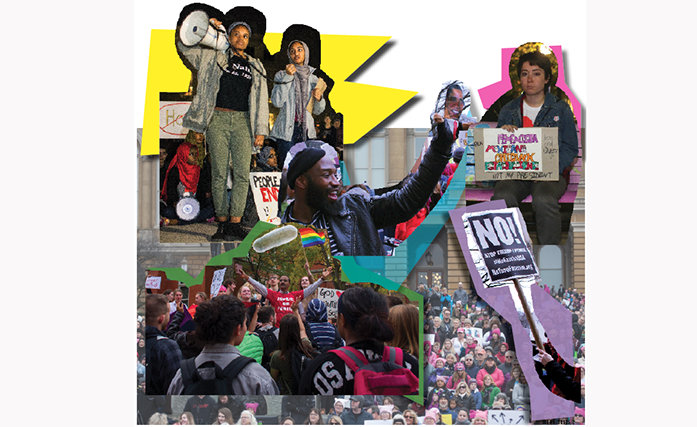By Elianna Novitch | [email protected]
C
harged by the state of the current political climate in the United States, activists are taking to the streets to express their concerns by organizing protests and rallies.
While it’s their right to assemble, some question the effectiveness of the protests and rallies and their ability to create tangible change.
“It has to be a combination of things, and just protesting won’t be enough,” said University of Iowa sociology Associate Professor Ion Bogdan Vasi. “The combination of strategies is most effective in making change.”
Vasi’s research focuses primarily on how social movements contribute to the diffusion of technological innovations, organizational change, and policymaking.
“Often, protests are a means for expressing an issue and a way that citizens can communicate that they aren’t going to be passive about the issue,” said Abhinav Gupta, an assistant professor of strategic management at the University of Washington.
Gupta has studied the effectiveness of how activist efforts using disruptive tactics such as protests and sit-ins can produce some immediate, localized success in creating change, but they do little to expand the objectives of a cause on a broader level.
Signs in hand, bullhorn in the other, protests have proved to be a way for people to become unified and show solidarity. One local example of this was the Iowa City Women’s March.
Organizer Corey Hickner-Johnson planned the march to show solidarity and to stand up against a lot of the hate that had been circulating. Hickner-Johnson noted that the march seemed to motivate people and encouraged them to do more.
“A lot of people contacted me after the women’s march wondering what the next step was and what they could do to get involved,” Hickner-Johnson said. “That just showed me that the march was a place for people to gather and become motivated. I do think people were moved to do more.”
Vasi notes that protests have the ability to inspire participants to become more active in their battle to create social change.
“Protests can be used to stimulate people to do more,” he said. “It’s those other things that are happening that have an effect on [issues] like preventing certain legislation from being adopted.”
Vasi noted that the message of the protest can be key in gaining support from the public.
“If they stay peaceful and frame their message in a creative way, they are more likely to win the sympathy of the general public,” he said. “But if things become violent and dangerous, the public isn’t going to respond to the message or take them seriously.”
Gupta argued that protests that are geared toward changing minds are more successful than protests whose messages are unclear.
“Protests have an effect even if it’s not successful. It raises attention to issues,” Gupta said. “If people combine that with an act of strategy to combat skepticism and change minds, that would be the ideal way to bring about change.”
UI student Savannah Lane said that while there is a benefit to protesting, it isn’t necessarily enough. Lane has attended various rallies and protests.
“I think [protests] are useful in getting your voice heard, but I don’t think they are the best way to get solid legislation passed,” Lane said.
Realizing that protesting isn’t effective just on its own, individuals have begun to participate in letter-writing campaigns, attending local political meetings, among other actions.
“I think democracy works only through the participation of the people, and it’s great that people are now becoming more active and less passive about policymaking,” Gupta said. “Even if some of these marches and protests don’t achieve anything in the short run, if this momentum can be sustained I think it will help in translating public opinion into public policy in the long run.”



